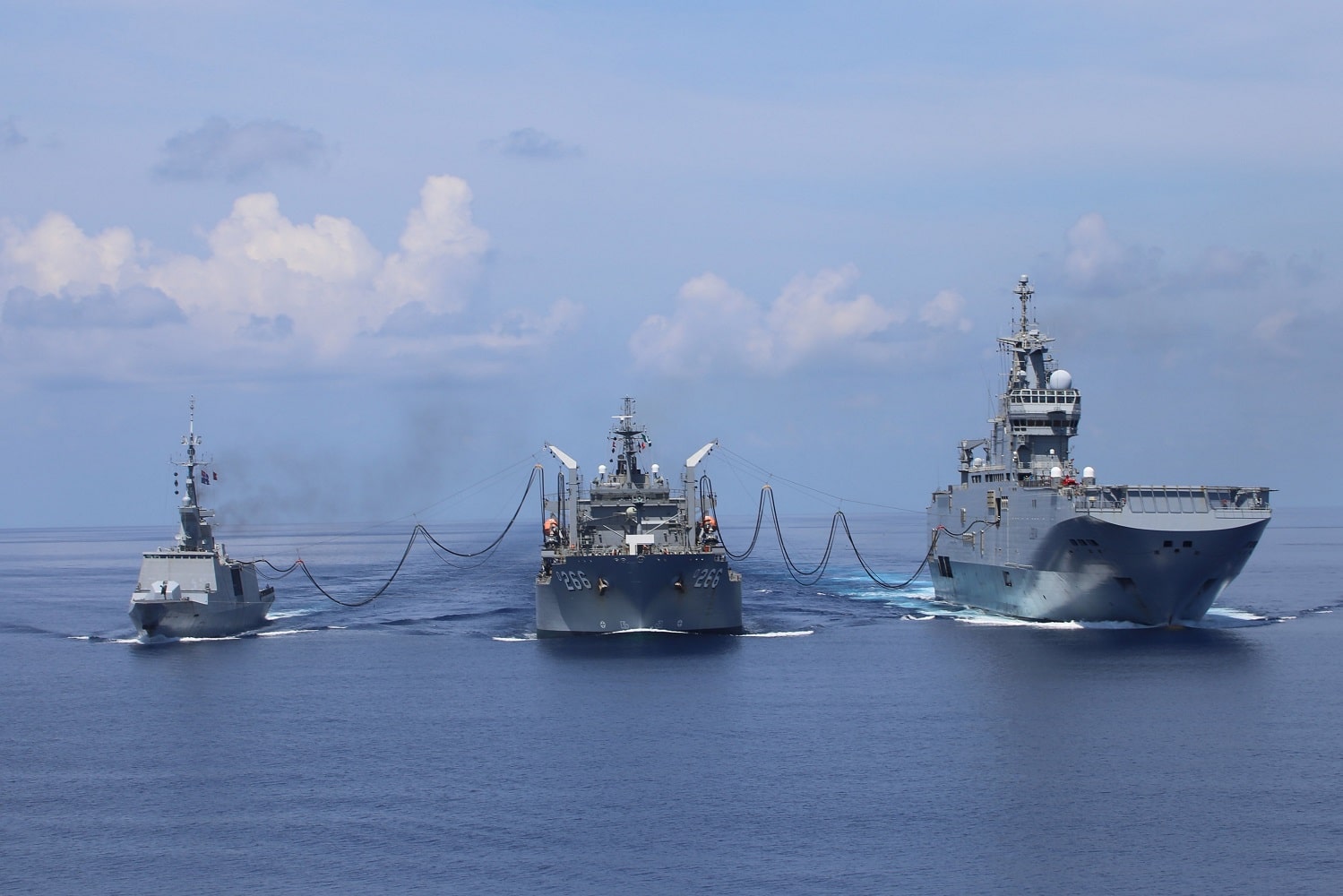Conditioning to accept the progressive finlandization of some ASEAN members — Part 2
4. There is no threat of an invasion by China — instead, the PLA’s calibrated military pressure on Brunei, the Philippines, Malaysia, Indonesia and Vietnam in the South China Sea is intended to instil a defensive psychology.
(a) The continued use of calibrated military pressure will serve to constrain ASEAN’s geopolitical freedom of action by making it permanently hostage to Chinese concerns, no matter how unreasonable it may be. I caution against over inflating the China threat as it will encourage the political weaponization of the issue, with China serving as a tool for ambitious politicians within ASEAN and in America to discredit opponents for being weak.
(b) Even the Europeans in the G7 are also squeamish about getting dragged by the US into a showdown with China. US officials said Italy and Germany were uneasy with potential communique language that China might view as provocative. Stressing "balance," German Chancellor Angela Merkel said that "China is our rival in many questions but also our partner in many aspects." Emmanuel Macron said the G7 wanted to work with Beijing on climate, trade, development and other issues despite disagreements. "I will be very clear: The G7 is not a club hostile to China," the French President said.
(c) NATO leaders called on China to uphold its international commitments and to act responsibly in the international system. They agreed on the need to address the challenges posed by China’s growing influence and international policies, and to engage with China to defend NATO’s security interests. Allied leaders also agreed an ambitious NATO 2030 agenda to ensure the Alliance can face the challenges of today and tomorrow.
(d) Despite some European reassurance to China, allies at the NATO summit in Jun 2021 agree that an attack in space or from a weapon fired from earth against a satellite could trigger an Article 5 response (the principle of collective defence), bringing space in line with land, sea, air and cyber.
5. Lack of respect for fellow ASEAN member states by the current Pinoy leadership of Rodrigo Duterte and Teodoro Locsin Jr earns them contempt (from the rest of ASEAN); and this is especially the case for Malaysia.
(a) The festering wound of unmet and unreasonable Pinoy claims to Sabah was reopened in July 2020 when a Twitter note from the US Embassy in Manila mentioned “Sabah, Malaysia.” The furious reaction from Philippine Foreign Secretary Teodoro Locsin Jr was to deny that Sabah was in Malaysia.
(b) Notes Verbale were filed by Malaysia and the Philippines at the UN over Malaysia’s extension of its continental shelf claim from Sabah’s coast facing the South China Sea. I note that Malaysia’s filing was consistent with UNCLOS, yet it drew an unpleasant response from the Philippines, which continues to entertain an archaic and illegal claim to Sabah territory.
(c) Malaysia considers the Philippine claims over Sabah a “non-issue” as Sabah in 1963 along with Sarawak, and Singapore was part and parcel of the founding states of the Federation of Malaysia, which accordingly was an act of “self-determination.”
(d) The lack of realism by Locsin sums up the whole illogical Philippine narrative centred on its anachronistic and illegal claim to Sabah. Philippine pundits may oppose or reject Sabah’s inclusion in Malaysia since 1963, but denying the fact of Sabah being a part of Malaysia amounts to abandoning reality. It is of no help to the Philippines itself or to its relations with Malaysia.
6. In 2015, China proposed an ASEAN-China maritime security exercise already at the ASEAN-China Defence Ministers’ Informal Meeting (ACDMIM), which at the time received a less enthusiastic response. After continued negotiations, at ACDMIM 2018, ministers of defence of China and the association’s member states reached agreement to stage an ASEAN-China Maritime Exercise off Zhanjiang, China, in Oct 2018. This ASEAN-China Maritime Exercise showcased China’s military diplomacy and demonstrating Beijing’s growing influence in the region. IMHO, ASEAN has enough real problems to manage when talking to its +8 external powers (like China, US, Russia, India, Australia and so on), NATO or the EU by virtue of its structure. It does not need the Pinoys to manufacture a fake one, like Sabah, for their domestic audience.
(a) If you ask me, the ASEAN Chairman (Brunei) is busy enough with the Feb 2021 Coup in Myanmar, the Sultan of Brunei does not need more current PRRD admin Bullsh!t. After the ASEAN Summit, as a follow up, ASEAN is also considering a proposal to send a humanitarian aid mission to Myanmar as a potential first step in a long-term plan to bring the Tatmadaw (aka the Myanmar Army), back to their barracks instead of shooting people in the streets.
(b) Sino-Brunei relations have gone from strength to strength with China seeking Brunei’s oil and gas to fuel its economic growth and to mediate its interests with ASEAN. Brunei considers Beijing a
crucial partner in diversifying its fossil-fuel-based economy. For example, Brunei’s 30km mega Temburong bridge — aimed at reducing travel time between the capital and the Temburong district,
vital to Brunei’s social and economic development — was co-constructed by China State Construction Engineering Corporation and opened in March 2020. Most of Brunei’s large-scale infrastructure deals, including dams, roads, and the Muara Port, are
financed by China under the Brunei-Guangxi Economic Corridor plan.
(c) The ASEAN Chairmanship will pass next to Cambodia and it will be hosting of the 16th ADMM and 9th ADMM-Plus at the end of 2021. It looks like 2022 will be a lost year, as China pulls the strings of its puppet again.
7. In the 2014-2017 cycle, the areas of ASEAN cooperation in defence were expanded, to include the Expert Working Group (EWG) on Humanitarian Mine Action. This cycle saw the conduct of three joint full troop exercises (FTXs), namely:
(i) ADMM-Plus Maritime Security / Counter Terrorism Exercise;
(ii) ADMM-Plus Military Medicine / HADR Exercise (AMHex); and
(iii) ADMM-Plus Humanitarian Mine Action / PKO FTX (Exercise Force 18). The Standard Operating Procedures on Multinational Coordination Centre, adopted by the 11th ADMM in 2017 was developed during this cycle.
8. On 10 Dec 2020 at the 10th Anniversary of the Founding of ADMM-Plus, Vietnam’s General Ngo Xuan Lich affirmed that as an active, proactive, and responsible member of ASEAN as well as ADMM-Plus, Vietnam will continue to make its greatest efforts, together with ASEAN and ASEAN’s friends, to make contributions to peace, stability, cooperation and development of the region. In the 2017-2020 cycle, the areas of ASEAN cooperation in defence were further expanded, with another EWG established in the area of cyber security. This cycle saw the conduct of five FTXs, namely:
(ii) ADMM-Plus Military Medicine FTX (Medex 2019);
(iii) ADMM-Plus Counter Terrorism FTX;
(iv) ADMM-Plus PKO FTX; and
(v) ADMM-Plus Humanitarian Mine Action FTX.
9. In addition, the EWG on HADR staged a staff exercise / communications exercise, while the EWG on Cyber Security organised a table-top exercise.
(a) Other major deliverables of the cycle are the launching of the Handbook on Military Medicine and the establishment of the ADMM-Plus EWG on Cyber Security portal.
(b) During Vietnam’s 2020 ASEAN Chairmanship, they successfully organized numerous ADMM events through-out the year; which cumulated the 10th Anniversary celebrations of the Founding of ADMM-Plus (on 10 Dec 2020). At the Anniversary Vietnam’s General Ngo Xuan Lich affirmed that as an active, proactive, and responsible member of ASEAN as well as ADMM-Plus, Vietnam will continue to make its greatest efforts, together with ASEAN and ASEAN’s friends, to make contributions to peace, stability, cooperation and development of the region.
(c) On 15 Jun 2021, during the 15th ADMM, the ADMM Bandar Seri Begawan Declaration in Commemoration of the 15th Anniversary of the ADMM towards a Future-Ready, Peaceful and Prosperous ASEAN was adopted. The Declaration reaffirmed ASEAN's commitment to tackle prevailing and emerging transboundary security threats in our region, particularly in the maritime security, counter-terrorism, Chemical, Biological and Radiological, cybersecurity and information domains.
(d) The ADMM approved the establishment of a Cybersecurity and Information Centre of Excellence (COE) in Singapore, which will complement the ASEAN Cyber Defence Network in promoting regional exchanges, interactions and cooperation on cybersecurity matters. The COE will enable information sharing and capacity building among ASEAN defence establishments against cyberattacks, disinformation and misinformation. The ADMM also approved Singapore's proposal to host an ADMM-Plus conference on countering Chemical, Biological and Radiological threats in 2022.





